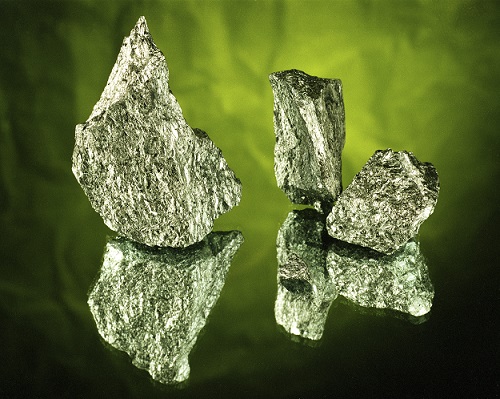 Smoking cigarettes kills more Americans each year than AIDs, suicide, murder, car accidents, alcohol, and illegal drugs combined.
Smoking cigarettes kills more Americans each year than AIDs, suicide, murder, car accidents, alcohol, and illegal drugs combined.
Smoking increases the risk of Alzheimer’s disease by 57%, the risk of a hip fracture by 40%, and chronic back pain by 79%. Then there’s the classic problems; cigarettes give you lung cancer and constant breathing difficulties due to carbon monoxide driving the oxygen from your red blood cells.
Some data even suggests that the 21% of people who smoke in the US will die 13 to 14 years earlier than non-smokers. Even second-hand cigarette smoke kills 42,000 non-smokers in the United States each year.
On this website, we’ve discussed the acne dangers of cigarettes before. They drain your vitamin E and C, and at peak ignition time, you can ingest 100 trillion free radicals per puff…
…but one thing we haven’t discussed is the mind bogglingly large amount of chemicals stuffed into nearly all cigarettes on the market.
Consider these facts: there’s a total of 599 chemicals approved for usage in cigarettes. That total includes up to 69 carcinogens and over 20 poisons.
Unlike processed foods, companies don’t have to display ingredients on a cigarette packet; they are exempt by law. It’s no longer like the 1950s where adverts said that cigarettes were good for you and 75% of US adults were smokers with no worries. These days, the average smoker knows his habit is rotting his body from the inside out.
Cigarettes are not a health product and hence so-called “big tobacco” has no issue with stuffing in tons of fillers, flavourings and combustion agents to push the profit margin as high as possible.
Heavy metals in cigarettes
It’s not just the additives that make cigarettes a toxic chemical bombshell. It’s also the raw tobacco leaves, grown in contaminated soils, and that leads us to our first villain found in cigarettes – heavy metals such as lead, cadmium, arsenic and aluminium.
Heavy metals are toxic metals which the body has no use for. Most of them are inflammatory villains and professional antioxidant burglars (arsenic, aluminium). It starts with the fertilisers used for the fields, which are notoriously unhealthy. They contain radioactive sludge, polluted water, and pesticides with arsenic and cadmium as secondary additives.
They even contain radioactive elements, like the polonium-210 used to kill British MI6 agent Alexander Litvinenko back in 2006. The tobacco plant absorbs these toxic elements through its roots.
Read Annihilate Your Acne – get the diet that could transform your skin!
Scientists have tested high vs low cadmium soil and found a close correlation with levels in the tobacco plants grown there (study). Air pollution can increase heavy metals further; for instance, if the tobacco plants are grown near an industrial factory spewing out aluminium fumes all day.
Again, it boils down to a lack of care about the safety of the product; cigarettes are already deadly inventions, so why bother making them clean? The heavy metal content of cigarettes varies wildly, but most contain at least some.
Consider the individual metals. Firstly, there’s the famous lead, from paint and formerly children’s toys, which worsens acne via oxidative stress and inflammation.
One survey of middle-aged men in 24 British towns showed a strong association between cigarette smoking and blood lead concentrations. 2-6% of the lead in cigarettes is vaporised and then inhaled, with the result that smoking 20 cigarettes per day creates an inhalation of 1.5ug of lead on average, ranging from 0.97–2.64ug (study).
In fact, some scientists theorise that the behavioural problems of teenager smokers may be down to lead, including hyperactivity, poor impulse control, and reduced intelligence scores.
Then there’s arsenic, which over-accelerates your skin’s keratin production, a protein that binds dead skin cells together and clogs the pores. Arsenic occurs naturally in many foods; it’s a natural element of the earth’s crust.
However, tobacco tends to be grown in fields contaminated with lead arsenate, a pesticide which is now banned but lingers in fields after decades of usage. According to one study, smokers breathe in an estimated 0.8 to 2.4 micrograms of arsenic per 20 cigarettes they smoke.
Cadmium is another heavy metal which cigarettes are notorious for (study). Cadmium is non-corrosive and used in batteries and is a by-product of industrial metal smelting. It’s used for plastic, metal plating, and textile manufacturing.
Fruit juice and rice are also heavily contaminated (which is identical with arsenic), which causes the average Westerner to eat 30mg of cadmium per day from foods. The average cigarette contains 1-3mg, of which 40-60% is absorbed. Consequently, a daily pack of cigarettes can double your cadmium exposure, and a study confirmed that smokers’ bodies have twice as much cadmium as average.
Compared to other heavy metals, cadmium accumulates particularly heavily in the leaves of the tobacco plant, rather than the roots or stem.
Finally, there’s aluminum. Studies have confirmed that the aluminum content of fresh tobacco is high, as much as 0.37% by weight. This 2006 study found that active and passive smoking of tobacco increased the bodily burden of aluminum, and contributed to “respiratory, neurological and other” diseases. This study concluded that smokers have higher blood levels of arsenic, aluminum, lead and nickel, and this recent 2016 study found higher blood levels of aluminum than average.
All in all, cigarettes are a significant source of heavy metals, which you should avoid as much as you possibly can.
Deadly cigarette additives
 Next, we have the endlessly growing list of cigarette additives and their freakish offpsrings.
Next, we have the endlessly growing list of cigarette additives and their freakish offpsrings.
Firstly, tobacco crops rank as the sixth most sprayed agricultural crop in the United States (by pesticides per acre). More than 25 million pounds of agrochemicals are dumped on them yearly. One major example is the fungicide glyphosate, which can decimate your healthy gut flora.
The EPA regulates these pesticides, but not the quantities – only the specific types of pesticides and the circumstances of their application. Only organic cigarettes are free from agrochemical contamination.
Then there’s the various additives. The chemicals in cigarettes are endless; they include carbon monoxide, hexamine (found in barbecue lighter fluid), methanol, ammonia, napathalene, methoprene (insecticide), ethyl furoate and many more.
Only a tobacco industry insider could know the true purpose of all those additives – the manufacturers probably can’t even remember why they’re pouring them in. You could write a whole book about them all.
It’s a well known factoid that 599 different chemicals are approved for usage in cigarettes. Well, that’s only the approved ones – over 4000 can be created accidently during the combustion of permitted ingredients.
Most deadly are the various combustion agents, one of which is benzene, a colourless flammable liquid used as a starting material for plastics, lubricants, rubbers, drugs, and pesticides. It’s so abundant in industry that it’s among the top 20 chemicals produced in the US.
Next – the 6 best vitamins and minerals for naturally clear skin
More importantly, benzene is the main chemical behind tobacco smoking’s ability to cause leukaemia. At least three studies (study, study, study) on humans and two on animals (study, study) have confirmed this. It’s clearly a deadly substance then, and as for acne, benzene can severely drain your supplies of the antioxidant glutathione (study, study).
Roughly half of benzene exposure in the United States comes from tobacco smoking or second hand cigarette smoke. The average guy smoking 32 cigarettes per day inhales about 1.8 milligrams of benzene, which is 10 times the average daily intake of non-smokers.
Another combustion agent found in cigarettes is butane, which is again used for ignition fuel in cigarette lighters. It’s also found in campsite ovens. Butane is actually used as a legal high by many teenagers since inhaling it can induce extreme euphoria. It’s believed that big tobacco adds it to cigarettes to make them extra pleasurable and irresistible.
The downsides are manifold: memory loss, drowsiness, cardiac problems, asphyxia, and a condition known as sudden sniffer’s death syndrome. Butane was responsible for 52% of UK solvent related deaths in 2000, yet this is a chemical added to cigarettes, completely legally.
Chemicals – the worst of the rest
Perhaps the single worst chemical for acne in cigarettes is formaldehyde. Unlike butane and benzene, formaldehyde is not purposely added; it’s a combustion by-product produced when saccharides (sugars) in the tobacco leaves are ignited. It’s responsible for a large portion of the eye and throat irritation you get from smoking. Why? Because it’s a strong inflammatory agent, which is proven to increase inflammatory chemicals in human skin (study, study, study). Formaldehyde wafting around in your face 15 times a day is the last thing you want.
7 natural topical treatments which could transform your skin
Formaldehyde is also used as a germicide, insecticide, and industrial disinfectant, to preserve dead bodies, to make plastics and glue, and in nail polish. It was deemed to be a probable human carcinogen in 1995, but upgraded to a known carcinogen in 2004. The daily tolerable limit was gradually slashed from 3ppm per day to 0.75 as its deadly effects became clear.
Other deadly chemicals found in cigarettes include…
Hydrogen cyanide – a chemical once used as a genocidal agent in the World War 2 Nazi gas chambers. In small cigarette doses, it isn’t as deadly as the name cyanide suggests, but it’s a known eye and skin irritant similar to formaldehyde. Produced as a by-product from the burning of cigarette materials.
Toluene – a caustic solvent used to blend all the additives together. Linked to mild skin inflammation. Another chemical which people inhale to get high, but is linked to neurotoxicity. Toluene can deplete glutathione according to this study and this study. Acetone is another solvent used to blend the ingredients.
Polonium-210 – a radioactive compound added to tobacco fields in industrial fertilizers. 250,000 times more toxic than hydrogen cyanide. Polonium-210 was used to assassinate British agent Alexander Litvinenko in 2006. Scientists discovered polonium in cigarettes in the 1960s, and tried for decades to remove it, but for some reason never succeeded. Polonium-210 may be one reason behind the massive lung cancer risk from cigarettes. Avoid!
Vinyl chloride – a common industrial chemical, which is linked to cancer with continued exposure. It’s highly flammable, so manufacturers probably add it as a combustion agent.
Many cigarette brands are contaminated with a more ancient enemy as well – pathogenic bacteria.
One study found Acinetobacter (causes lung and blood infections), burkholderia (respiratory infections), clostridium (food borne illnesses), klebsiella (lung and blood infections), unhealthy varieties of bacillus (many different problems), and Pseudomonas aeruginosa, which causes 10% of all hospital-acquired illnesses in the US. Hundreds of bacterial species were found in each cigarette.
If this infection migrates to your gut, then it would be dire news for acne, since an overload of unhealthy microorganisms can lead to leaky gut syndrome and impaired acne nutrient absorption.
Tobacco specific nitrosamines (TSNAs)
 Lastly, we have the most notorious carcinogen (cancer-causing substance) in cigarettes of them all – tobacco specific nitrosamines.
Lastly, we have the most notorious carcinogen (cancer-causing substance) in cigarettes of them all – tobacco specific nitrosamines.
TSNAs are formed during the burning of nicotine and natural alkaloids in the tobacco leaf, and during the curing of tobacco in commercial preparation. They have strong links to many types of cancer, including lung cancer, pancreatic cancer, and liver cancer.
Nitrosamines are one reason why processed meat causes cancer, as the artificial nitrites in bacon and ham are converted to nitrosamines by gut bacteria. The nitrosamines in tobacco, however, are unique. The two most carcinogenic types of all are called nicotine-derived nitrosamine ketone (NNK) and N-nitrosonornicotine (NNN).
The mechanisms aren’t perfectly understood, but nevertheless, this study, this study, and this study showed that TNSAs could strongly increase free radicals (oxidative stress).
Furthermore, skin exposure via billowing smoke has other problems; this study found that TNSAs could increase the skin’s photosensitivity, or decrease its resistance to UVB rays in sunlight.
Nitrosamines vary wildly by country, with US cigarettes having at least 20% more than Australian varieties.
Curing practises are very important, as foreign cigarettes often use a cured variety of tobacco known as “bright tobacco”, which is lighter in colour and contains less nitrosamines. American cigarettes tend to contain “burley tobacco,”, which contains more. Different fertilisers create higher nitrosamine levels, and so do different strains of the tobacco plant.
This study followed smokers as they smoked for 24 hours, without altering their habits. They dropped all their cigarette butts into a special container provided. The scientists calculated their 24 intake of NNN and NNK respectively, the two worst nitrosamines in tobacco. For each country, they were…
USA (New York) – 3140ng and 1490ng.
USA (Minnesota) – 2510ng and 1150ng.
Australia – 368ng and 350ng.
UK – 1390ng and 1010ng.
Canada – 246ng and 449ng.
Sea buckthorn oil – a natural secret for acne and oily skin
It’s similar rule with additives, as American cigarettes contain far more harsh chemicals per puff. It’s not just dirty cigarettes, as chewing tobacco has already been cured and contains nitrosamines at low levels.
There’s now a subset of cigarette brands around that boast of being “nitrosamine free”, but scientists are now investigating whether nitrosamines form in the body after you ingest tobacco. That’s a plausible scenario, because it’s exactly what happens with nitrites from processed meat. In that case, no tobacco product on earth would be entirely free from TSNAs.
Foreign brands aren’t an option either: the typical Asian one is drenched with heavy metals due to the industrial pollution from their rapidly developing economies.
Therefore, your best option is to either 1) buy an organic brand to minimise some of the harm, or 2) buy some imported Canadian or Australian cigarettes. The ultimate option, of course, is to quit smoking entirely.
Conclusion
Cigarettes are so polluted that they’re perhaps the single most concentrated source of toxins in the modern world.
Smoking is probably the worst habit or vice for acne, much worse than drinking alcohol. Let this article be a reminder of exactly what you’re holding in your fingertips the next time you’re about to puff on a cigarette.
Think about it: have any of the people with truly glowing and gorgeous skin you’ve met in your life been smokers? The average smoker’s skin is dull, grey and lifeless. Smokers don’t necessarily have severe acne, but their skin is frequently covered with smaller, red pimples.
Therefore, I advise you to stop smoking cigarettes completely. It’s one of the best acne strategies you can follow.
Clearly, it’s not the easiest strategy, but cutting your intake in half will still eliminate a decent chunk of toxins and make a big difference to your acne. You can also avoid these deadly chemicals by dodging second hand cigarette smoke, or just holding your breath when you walk through it.
NEXT: discover the root causes of acne and banish your pimples forever
Thanks for reading!
